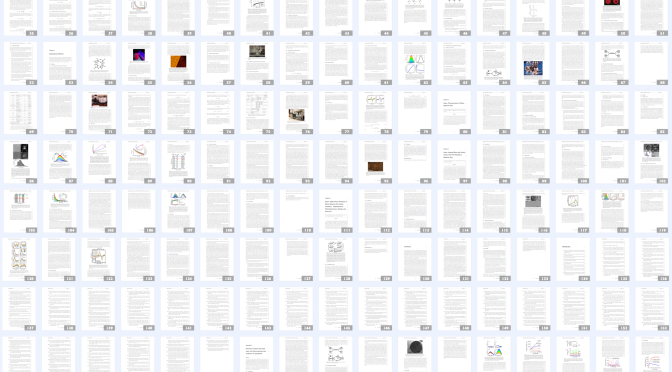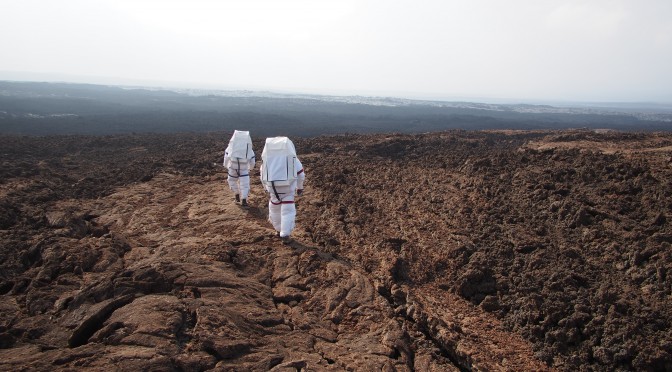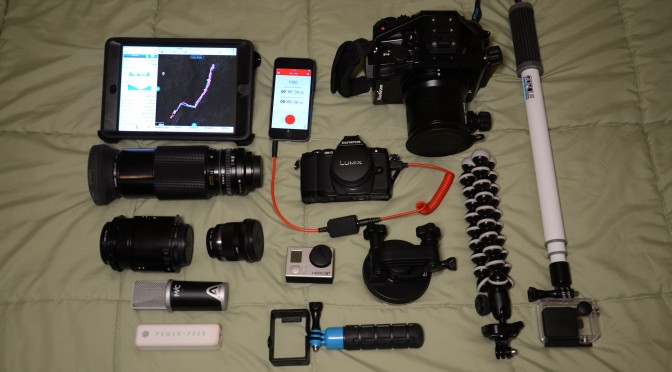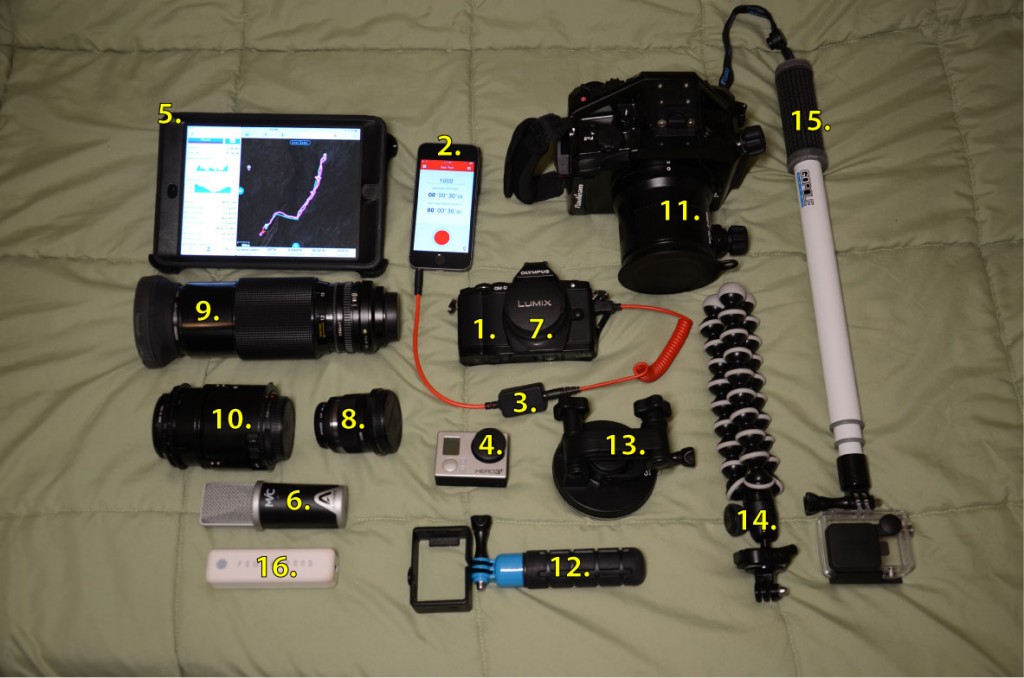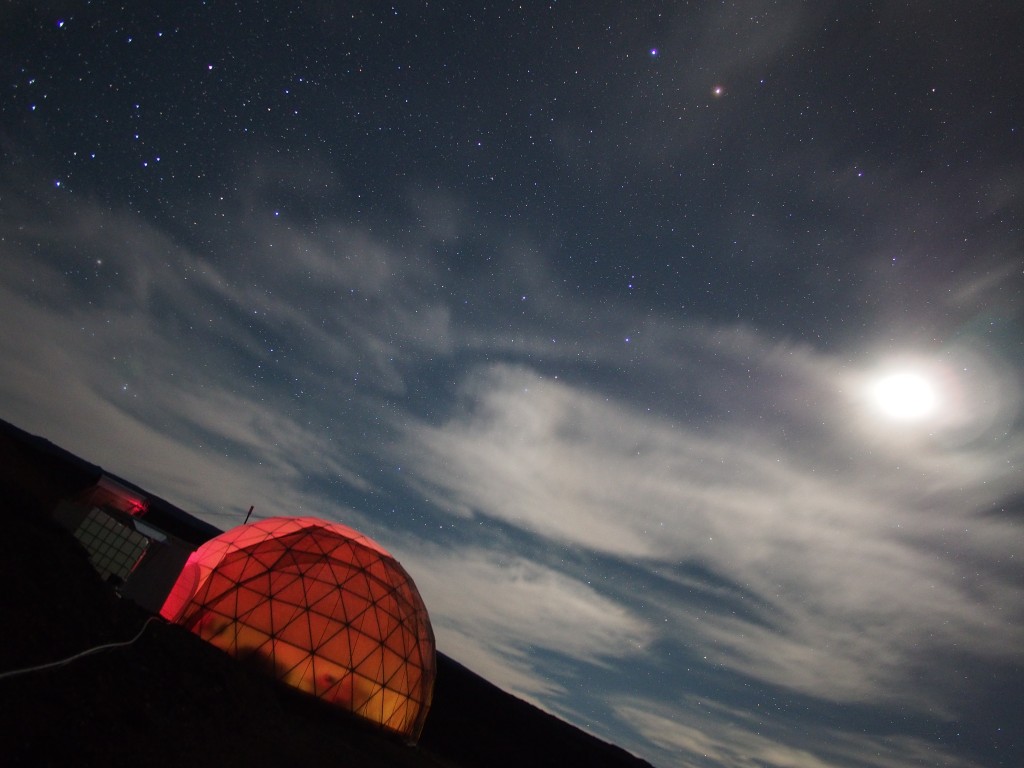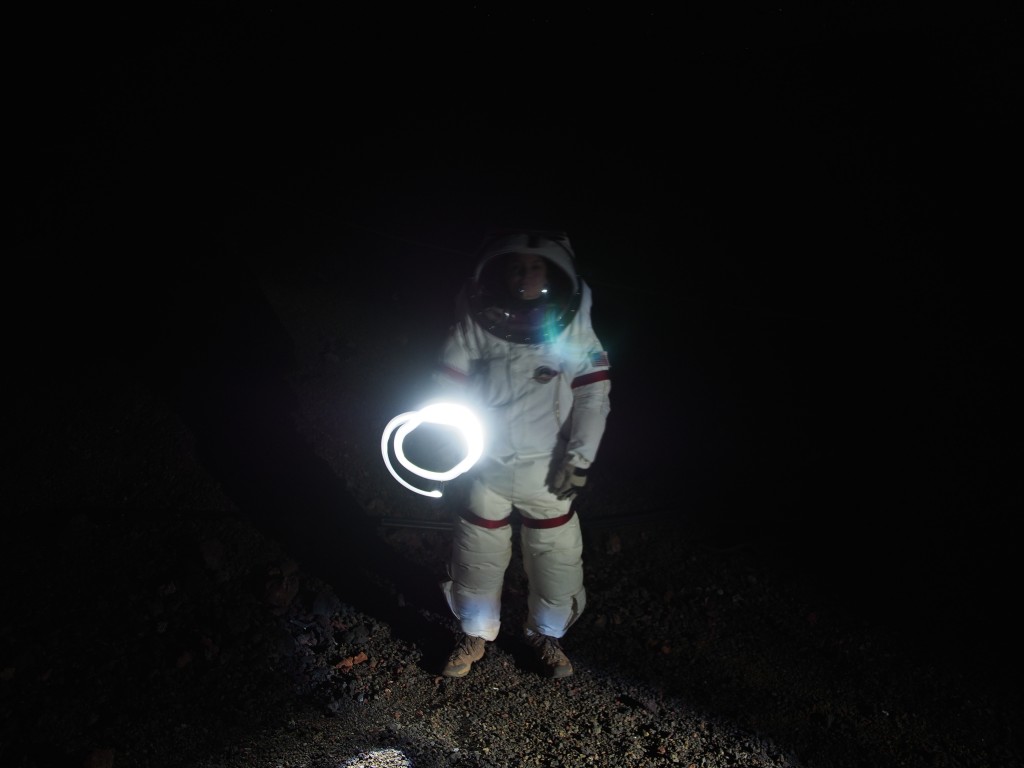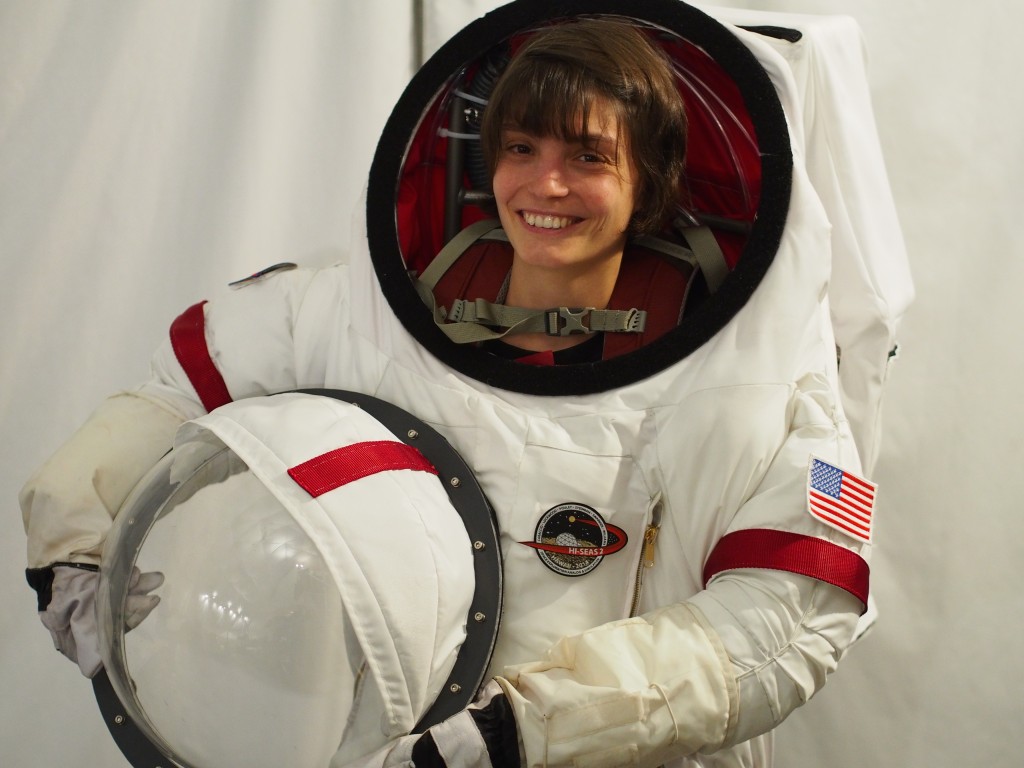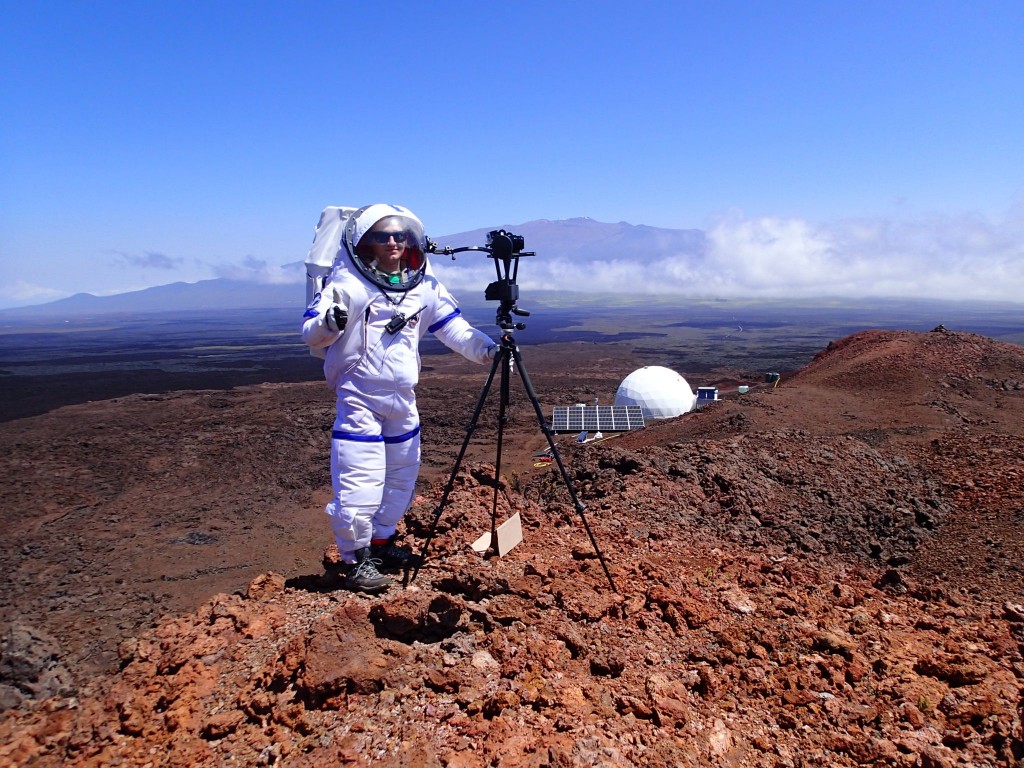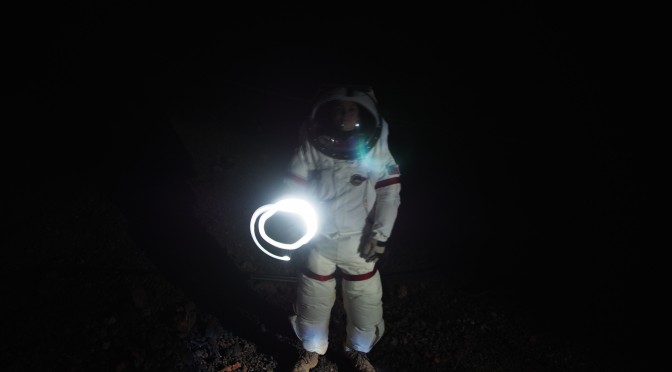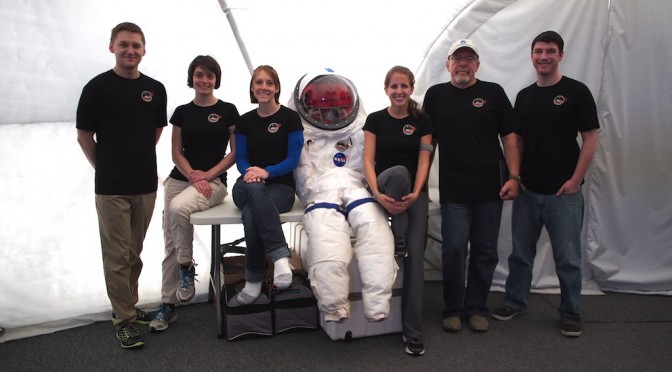Many schools in Alberta and British Columbia have e-mailed me about my HI-SEAS adventure, and it would be a waste not to share some of the awesome questions I’ve been asked! These questions were asked by the students in Mme. Spreen and Mme. Merriman’s grade 4 and 7 classes from École Coloniale Estates School in Beaumont, Alberta. Answering them was a hoot!
1. If you are to actually go to Mars, would you be nervous?
Yes, of course! Feeling nervous is a common emotion when you are aware of the possibility of something going wrong. It’s a healthy emotion that tells us to pay attention to our surroundings so that we don’t miss something that could hurt us. What would I be nervous about on Mars? Well, lots of things! On Mars, the atmosphere is very thin compared to Earth, and there is too little oxygen for humans to survive. We will have to bring sealed spaceships to Mars that keep their own atmosphere, one little leak might cause all the air to escape if it wasn’t caught quickly! There are many potential dangers for travel to Mars, so it would be quite natural for someone going there to feel nervous!
2. Why are Mars rocks reddish brown?
The rocks on Mars (and where I am on Mauna Loa) are rich in the element Iron (Fe). When Iron comes into contact with Oxygen (the important part of the air we breath) it forms a compound known as Iron Oxide. You may know that iron is fairly common in your daily life, and you’ll be able to identify Iron Oxide as something common… Rust! Yes, Mars is red because the iron in the soil was in contact with oxygen long ago, and most of the surface now is rich in minerals that contain Iron Oxide. Here’s a picture I took not long ago illustrating the colours:
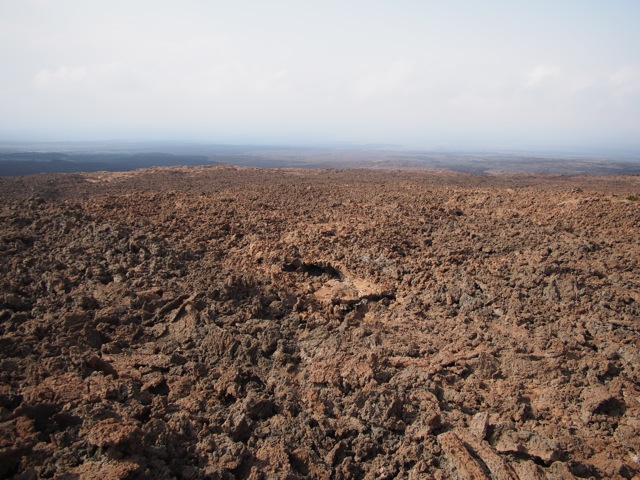
Here’s something that you might enjoy, iron oxide is also responsible for the colour of blood. Hemoglobin is a protein that carries oxygen in your blood, and the iron in it is responsible for the red coloration. Your blood is red for the same reason Mars is red!
3. What would happen if you ran out of food, oxygen, or water on Mars?
Well, a trip to Mars would need to bring along a lot of food, and typically you’d pack enough for your entire stay, that goes the same for oxygen and water too. BUT what if something bad happened that depleted one of those resources? Well, Martian astronauts would need to get very creative, very quickly. Water, as you probably already know, is a molecule of one oxygen atom and two hydrogen atoms. So if we ran out of oxygen, we’d just need to separate the two components of water (a process called electrolysis works well to do this). What if we ran out of water instead? Well, if we had the time, we could travel to the Martian polar ice caps, and harvest ice there, or even drill down into the Martian soil and hope to find it there. But, we could also look carefully at our rocket fuel… which is made up of oxygen and hydrogen! By carefully burning the rocket fuel, we’d be able to make water! Food is much more difficult to answer… Could we survive long enough without food to make it home? Maybe. Could we grow our own food in a greenhouse? Yes! But that takes a lot of time and planning. Hopefully something future Martians will think about a lot!
Here’s a picture of the plants we are growing at HI-SEAS:
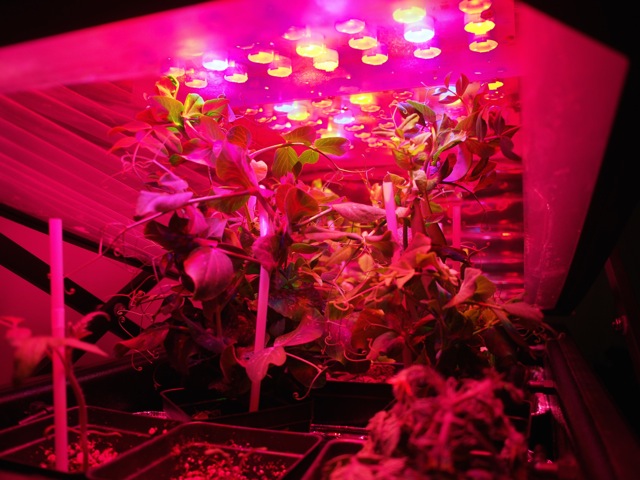
4. What qualified you to be part of HI-SEAS?
Well, for a start, I am a physicist. That means that I worked hard and did well in science and math. Second, I’m a friendly guy, which means that I get along well with others, this is important if I’m going to spend 4 months with 5 people in the same space as your classroom! Third, I like to learn all the time and solve problems. You probably hear your teachers talking about this all the time, but it’s true! If you are inspired by a particular problem, do a science project on it, ask questions to a local scientist, look up the answers on the internet! Do whatever you can to feed your curiosity, and you’ll build a strong foundation to reach for your dreams!
5. What do the other people on this mission do?
This would be a long answer if I went into detail, so I’ll try to keep it short. Casey, our commander, is mostly interested in the geology (the rocks and volcanoes) nearby, so he spends a lot of time and effort learning about the formation of the volcanic regions in Hawaii and in the Tharsis region on Mars. Lucie is in charge of the plant studies, and she’s grown several crops of lettuce, tomatoes, and peas from the soil around the habitat. Annie is a chemical engineer that is interested in recycling waste on future space missions, so she carefully monitors how much garbage we make and recycles what we can to reduce our impact on the environment. Tiffany is responsible for the spacewalks, so she maintains and repairs the suits so that we can go outside to collect samples for our research. I’m working on a 3D printed tools project where we test surgical instruments that were made with plastic in a 3D printer!
Other than that, we all share the work doing chores and making meals for each other. Chores include laundry, cleaning the bathrooms, vacuuming, everything you do at home.
6. Do you have a way to get extra water if you are out?
We can get a little bit of water from the rain here on Mauna Loa, but it doesn’t rain often, so if we ran out of water, we’d be in big trouble. For the HI-SEAS mission, there is a water deliver truck that comes up the mountain to refill our water tanks every 20 days or so. We carefully monitor how much water we have left so that we know when to call them. Here is a chart of our water over the last 21 days!
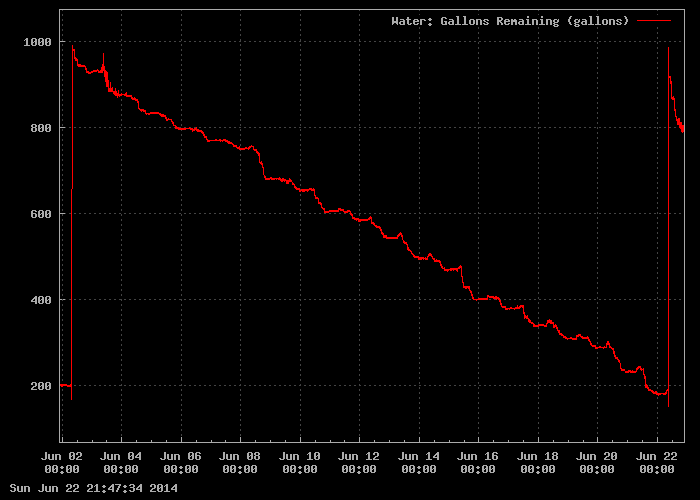
7. How would you build everything from the habitat on Mars?
You would bring most of the materials with you. Our dome would probably be made out of an inflatable material, plastic or a synthetic material. The rectangular block that houses our workshop would probably be part of the rocket that brought us down to the surface. Everything is recycled and nothing is wasted. Here’s a picture of me in front of the habitat.

8. What is the most common thing you cook?
Well, we haven’t made the same thing twice! But we have lots of dehydrated fruits, vegetables and meats, so we are mostly working through our stores of those things. Soups are by far the easiest thing for us to make, because everything needs water to be added to it to rehydrate it anyway. We have a few treats while we are in here, like a couple of bags of chips and a couple of those small Halloween chocolate bars, but they have to last us the entire 4 months!
9. Do you believe in aliens?
Another difficult question! I believe that aliens exist, but I have never seen any compelling evidence that they have visited our solar system! As you probably know, scientists have found lots of planets orbiting stars throughout our galaxy, but so far, they haven’t been able to tell whether or not those planets harbour life, much less whether there is intelligent life out there! I believe that we will discover life outside of the solar system within 10 years, but I don’t think it will be the kind of aliens that we see on TV or in the movies, unfortunately.
10. What is the biodome made of?
Our dome is made out of a geodesic frame of stainless steel, with two layers of plastic. The outer layer is a waterproof plastic, like a tarp, that repels water and wind, and the inner covering is made of a soft material that insulates the dome, kind of like a multilayered blanket. The dome is very strong, because of it’s shape. You may have seen smaller versions of these spherical “cages” at playgrounds, although most modern schools don’t have them anymore because they are pretty dangerous!
11. Do you think it rains on Jupiter?
Oh absolutely! I rains on almost every planet! Even Mars! It’s WHAT is raining that’s interesting! Did you know that on Saturn’s moon Titan, it rains a molecule called Methane!! In fact, Titan has lakes and rivers and oceans of methane, just like Earth has lakes and rivers and oceans of water. Now here comes the most interesting part, methane is a component of flatulence… You heard that right, on Titan it rains FARTS!
(Ross: Hahaha, sorry Theresa and Amanda, cut those last two sentences out if you think it’s over a line.
Amanda: Raining farts … bahahahaaaa. Perfect middle school humour. They will love it.).
12. Have you ever had to scrub bird poop off the solar panels?
Nope! There are no birds up here! We are at an elevation of 2,500 meters above sea level! Almost nothing grows up here, so there is no food for birds. I haven’t seen a bird since the day we left Hilo to go to the habitat! There is the occasional butterfly or spider that I see, but they are so rare it’s a marvel when we see them. Even humans have a hard time surviving at this elevation. There is a condition called Mountain Sickness (Monge’s disease) that makes humans feel tired and confused if they aren’t able to adapt to high altitudes (sometimes I feel tired and confused here)!
13. What happens if you have a fire?
We’d grab the nearest fire extinguisher and put it out!!!! Then we’d call 911, and wait an hour and a half for help to arrive! But there is very little that can light a fire up here, in fact, we don’t have matches or lighters or anything, just like real spaceships. If we really really needed to make a fire (for heat, let’s say) we’d have a hard time making it!
14. How do you get more food if you run out?
We grow it! Lucie has a bunch of plants that we could eat if we ran out of food, but we planned well in advance and we have lots of food left for the last month of the mission.
15. What material is the space suit made out of?
There are two types of suits that we have here, hazmat suits, which are just made out of heavy plastic, and our spacesuit analogs, the MX-C’s, which have a whole bunch of features. They have an inner lining of soft fabric, then a shell with a backpack for all the suit’s electronics and water cooling. Then an outer layer of white fabric which is more durable to protect us when we fall. Real spacesuits would be made from very expensive synthetic materials and have all sorts of sensors to alert the occupant to danger.
Here’s a picture of me in the suit, and Annie and Lucie on a spacewalk.
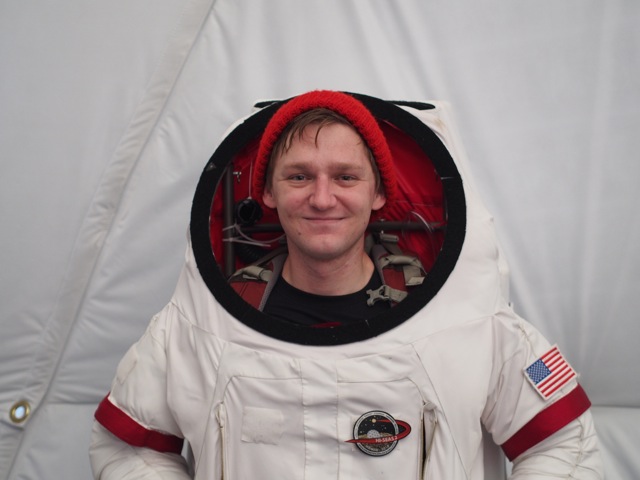
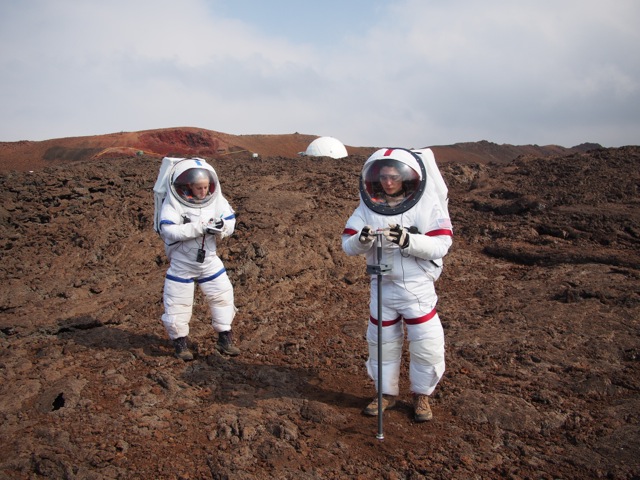
16. What do you do for fun?
We have lots of options for having fun! First, we can plan a fun spacewalk and go exploring! We even go out at night in spacesuits and take pictures of the stars (how would Mars’ sky differ from Earth’s?). If we want to stay inside, we have boardgames to play with each other, and a projector where we can watch movies and TV shows that we brought along with us. We also have our computers, and one of my favourite things to do is play a few minutes of Minecraft now and then!
17. How could you get air on the space station?
You need to bring it with you! Lots of the things that are sent up to the space station are just tanks of gas for the astronauts to breathe! Unfortunately, we don’t yet have the technology to grab an asteroid and extract gases from it (many of them have water, hint hint) but that’s a problem that we are working on, and that future scientists like yourselves may find a solution for!
18. Does the bathroom smell because of the compost?
Most of the time, no. The bathroom doesn’t smell at all usually. But… Every two days the composting drum needs to be rotated (we used to rotate it every time we used it, but now only once every two days), and when it gets rotated the stench is HORRIBLE. For about two minutes. The fans in the bathroom draw the smells outside right away. I rotate the drum after everyone has gone to bed, and I close the bathroom door behind me so that I don’t have to smell it.
19. Is it hard to get your space suit on?
Yes, it is very difficult. It always takes two people to get a suit on, and sometimes it takes three. That’s because the backpack of the suit is so heavy, someone needs to be there to help lift it while you get into the suit. Other than that, operating the suit is pretty easy, and you can easily go two hours before you need to take it off.
20. Why do you have a Hazmat suit to use when you go on an EVA?
Very good question! The first reason is that there are only two of the white MX-C’s, and there are 4 of us that go out sometimes, so we need the hazmats for the other two. The second reason is by far the most important… Remember that we need help getting into the suits? Well, we also need help getting out of them. So we take the worst case scenario and practice it. What would happen if an MX-C suit caught on fire??? Someone would need to be there to help the person get out. It’s very easy to get out of the hazmat suits, but very hard to get out of the MX-Cs, so we always send a hazmat helper along in case the worst scenario happens. So far we haven’t had any trouble.

I enjoyed answering all your questions, and I wish you a very exciting summer! Make sure to think about some of the things you asked and what you’d do differently if you were travelling to Mars! It might be fun one night to set up a tent and pretend that you are on a Mars mission too! Pack all your food and water, and imagine what it would be like to live on another planet!
